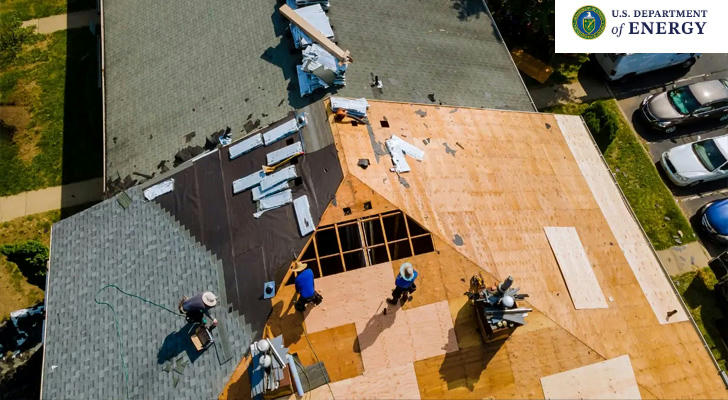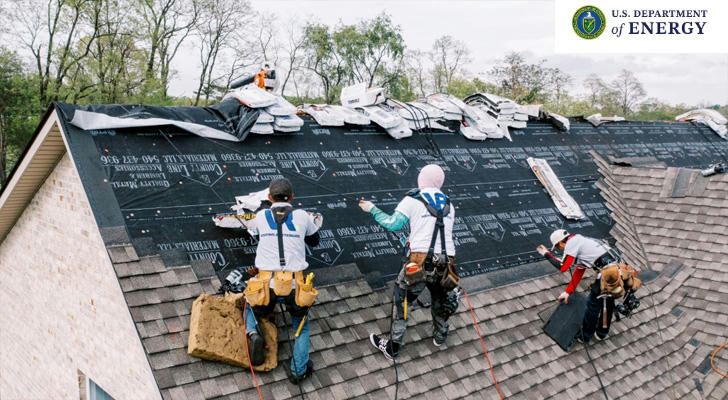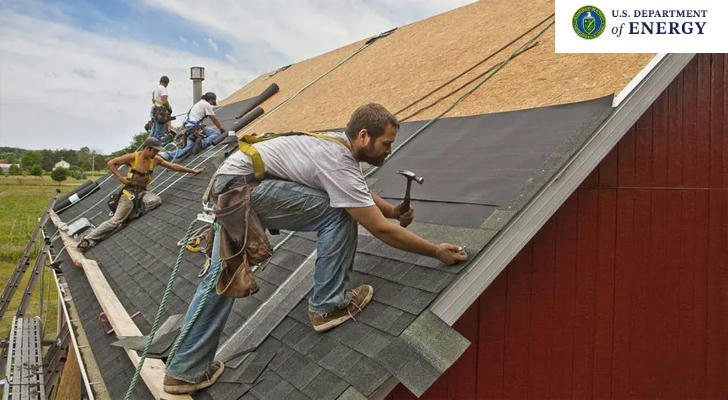Government-funded Roof Replacement: A Smart Investment for Your Home
A sturdy, well-maintained roof is essential for protecting your home from the elements, improving energy efficiency, and maintaining property value. However, roof replacement can be expensive, leaving many homeowners wondering how to afford it. Fortunately, government-subsidized programs can help cover some of the costs, making a new roof more accessible. Whether you’re a young homeowner, a middle-aged professional, or a retiree, there are options tailored to different needs.

Why Upgrade or Replace Your Roof?
Avoid Expensive Repairs – An aging roof can cause leaks, mold, and insulation issues. Replacing it in time prevents costly damage and keeps your home secure.
Improve Energy Efficiency – Old roofs lose heat in winter and trap heat in summer, raising energy bills. Upgraded materials can cut heating and cooling costs by up to 30%.
Increase Home Value – A new, energy-efficient roof enhances curb appeal and boosts resale value, making your home more attractive to buyers.
Enhance Safety & Comfort – Weak roofs risk collapse in harsh weather. A sturdy, weather-resistant upgrade ensures better protection and a more comfortable living space.
Government-Subsidized Programs for Roof Replacement
The U.S. government offers several programs to assist homeowners with roof repairs and replacements, particularly for low-income families, seniors, and individuals in disaster-prone areas. These programs can significantly reduce out-of-pocket expenses.
Weatherization Assistance Program (WAP)
WAP, managed by the U.S. Department of Energy, provides funding to improve home energy efficiency, including roof repairs and insulation upgrades. Homeowners meeting income requirements may qualify for low-cost roofing improvements.
Low-Income Home Energy Assistance Program (LIHEAP)
While LIHEAP primarily assists with heating and cooling costs, some states allow funds to be used for minor home repairs, including roof sealing and insulation, to improve energy efficiency.
USDA Single Family Housing Repair Grants
Also known as the Section 504 Home Repair Program, this initiative provides grants and loans to low-income rural homeowners for critical home repairs, including roof replacement. Seniors (62 and older) may qualify for grants, while other eligible homeowners can apply for low-interest loans.
FHA 203(k) Rehabilitation Loan
For those who don’t qualify for grants, the Federal Housing Administration (FHA) offers loans that allow homeowners to finance roof replacements along with other home improvements.
Local and State Programs
Many state and city governments offer assistance for home repairs through community development programs. Homeowners should check with their local housing authority or energy office for available support.
Roof Replacement Options for Different Age Groups
Young Homeowners (18-35): First-time buyer grants and government-backed loans can help cover roofing costs, keeping mortgages affordable.
Mid-Career Homeowners (36-55): Programs like WAP and energy tax credits reduce costs while improving home efficiency.
Seniors (56+): USDA grants and state aid provide financial support for essential roof repairs, ensuring a safe and comfortable home.

How to Apply for Government-Subsidized Roof Replacement
1.Check your eligibility
Priority is given to low-income households, seniors, and residents of rural or disaster-affected areas.
Visit the Department of Energy or Benefits.gov to see if you qualify.
2.Find available programs
Enter your zip code on Benefits.gov to search for state and federal home repair programs.
Contact your local housing agency for more resources.
3.Gather required documents
A recent utility bill Proof of income (pay stubs, tax returns) Proof of home ownership or lease agreement Proof of identity (driver's license, Social Security card)
4.Submit your application
Many programs allow online applications through government websites.
Some require an in-person visit to a local housing office.
5.Schedule an assessment
If approved, an inspector may visit your home to assess the roof's condition and determine the level of support needed.
6.Complete your roof replacement
This work is usually done by a government-approved contractor.
Once completed, you can enjoy a safer, more efficient home while reducing utility bills.
Success Story: How Government Subsidies Helped Mark Replace His Roof
Mark, a 64-year-old retired veteran living in Ohio, noticed severe leaks in his roof after a particularly harsh winter. Living on Social Security, he couldn’t afford the $10,000 cost of replacement. After researching his options, he applied for the USDA Single Family Housing Repair Grant, which covered 80% of his roof replacement costs. Additionally, through WAP, he received insulation upgrades that further reduced his energy bills. Today, Mark enjoys a safer, more energy-efficient home, all thanks to government-subsidized programs.

Final Thoughts
A roof replacement is a crucial investment in your home’s safety, efficiency, and value. While costs can be high, government-subsidized programs make it much more affordable. Whether you’re a young homeowner, a working professional, or a retiree, there are options available to help you upgrade your roof
